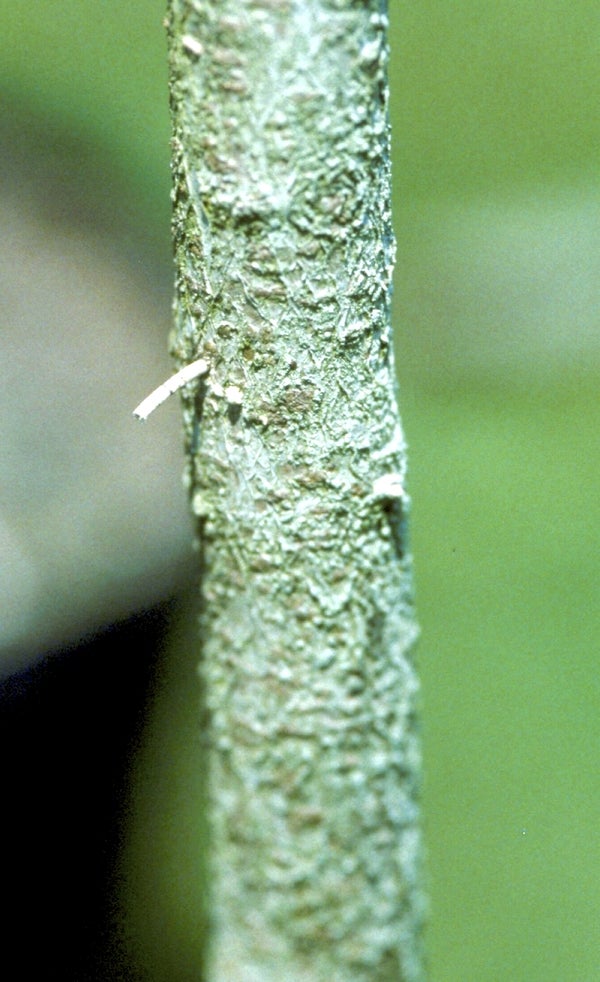Darrell Blackwelder: Ambrosia beetles are bad news
Published 12:03 am Friday, April 17, 2015

- University of Georgia This branch is infested with ambrosia beetles, which leave the strings of sawdust after boring a hole in the plant.
Cooler weather this week has halted many garden activities and many people are afraid to plant for fear of late frosts. However, experienced gardeners and producers know to take the date with a grain of salt and keep an eye on the extended weather forecasts.
Be careful when planting tender annuals as unseasonable frosts can often reach into late April. Many are still pressing forward with gardening questions. Below are a few questions posed by homeowners.
Question: I planted a weeping cherry tree last fall and it did fairly well until the cold weather. Only half of the tree bloomed. Now there are little streams of sawdust coming out of the bark that looks like worms. What is this and what is the control?
Answer: Your situation sounds like you have an infestation of ambrosia beetles. These are very small beetles that bore into limbs and trunks that can be identified by toothpick-like strands of sawdust protruding up to 1.5 inches. Once the beetles are inside trees, they cannot be killed with insecticides. They often kill the tree. Preventative sprays is the best way to control the insect. Go to http://www.ces.ncsu.edu/depts/ent/notes/O&T/trees/note111/note111.html for more detailed information on controlling the insect.
Question: I have some daffodils and I want to move and bring them to another location in my home landscape. When and how is the best way to move the bulbs?
Answer: It’s best to be make sure the daffodil bulbs are dormant before digging. Mark the area with a label and wait until the foliage turns yellow or turns brown. Dig the bulbs up and gently pull apart to separate them. Be gentle and be careful not to damage. Some may need to be divided. Relocate them in an area that is well-drained with plenty of light. Go to http://www.ces.ncsu.edu/hil/hil-611.html for more detailed information on planting daffodils and other bulbs.
Question: What can I spray to kill control English ivy?
Answer: English ivy can be quite tolerant of common herbicides such as glyphosate. Studies at N.C. State University revealed that English ivy was controlled by glyphosate (Roundup) when applied in the spring(now). The vines should be actively growing and have new growth with at least two to four new leaves sprouting. Best control will occur if you use a higher rate of glyphosate with a surfactant. It is very important to have full leaf coverage. Avoid applying herbicides to the point of runoff. It is important to spray now because the later the foliar application, the less effective the control. Studies have shown that late summer and fall applications in North Carolina were virtually ineffective. Go to http://www.ces.ncsu.edu/depts/hort/hil/hil-648.html for more detailed information on controlling English ivy and other hard to control weeds.
Darrell Blackwelder is the County Extension director with horticulture responsibilities with the North Carolina Cooperative Extension Service in Rowan County. Learn more about Cooperative Extension events and activities by calling 704-216-8970, Facebook or online at www.rowanextension.com




